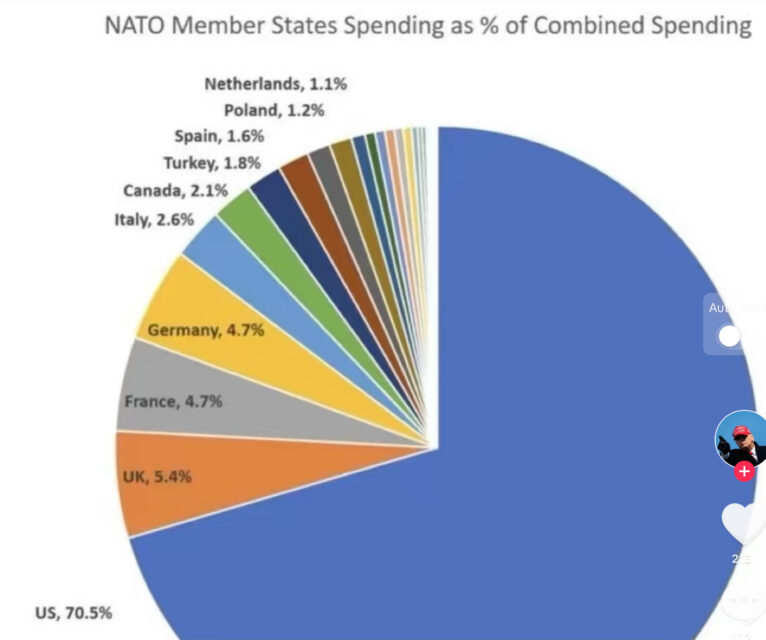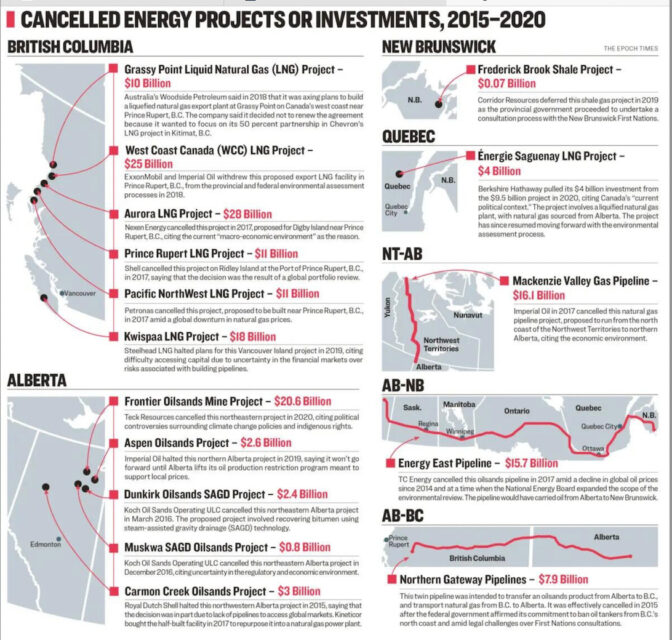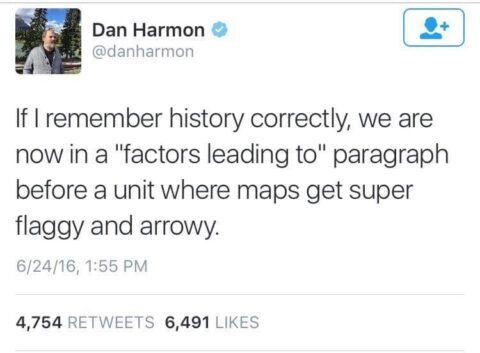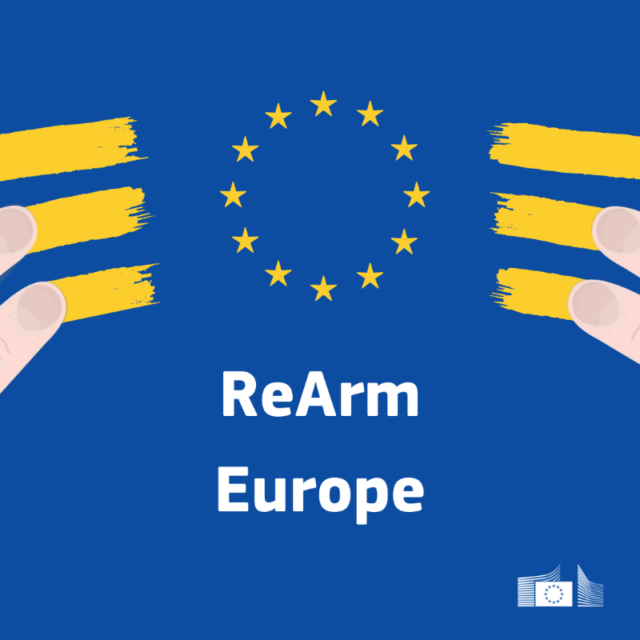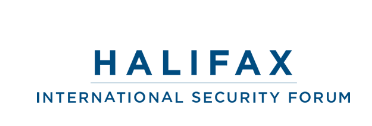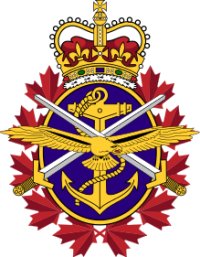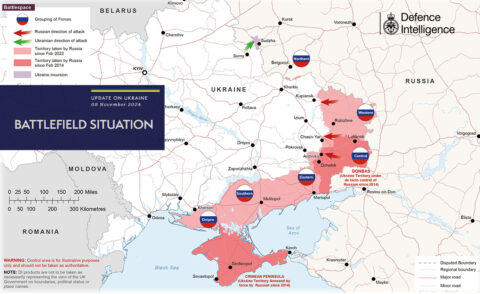The Korean War by Indy Neidell
Published 21 Mar 2025Learn to speak the language of modern war! Today, Indy goes over some of the history and uses of NATO Joint Military Symbology and how it inspires and helps us in our own cartography department. Join us for this crash course — the perfect accompaniment to the regular series.
(more…)
March 25, 2025
How Maps Decide Battles – NATO Symbology Special
March 20, 2025
Oh, goodie … the ever-bouncing F-35 fighter decision is back in play
My initial reaction on seeing Alex McColl’s headline was to immediately reject the notion of the Royal Canadian Air Force operating two completely different fighter aircraft, both for cost and for personnel reasons: the RCAF is already underfunded and short on trained aircraft technicians for a single fighter (the CF-18 Hornet), never mind two even higher-tech replacements. But on reading the article, I’m open to further investigation of the idea:
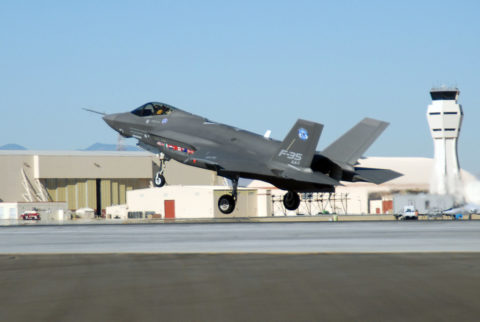
“F-35 Lightning II completes Edwards testing” by MultiplyLeadership is licensed under CC BY 2.0
Canada’s new Prime Minister Mark Carney didn’t waste any time standing up to Donald Trump’s illegal trade war. Within hours of being sworn in, Bill Blair — who was minister of national defence under Justin Trudeau and remains in the role under Carney — went on CBC’s Power & Politics to deliver a bombshell: Canada is going to re-examine our plan to purchase 88 American F-35A fighter jets.
This was in response to a question about if Canada would emulate Portugal, which announced that it was reconsidering a planned purchase of American F-35 jets: “We are also examining other alternatives, whether we need all of those fighter jets to be F-35s or if there might be alternatives. The prime minister has asked me to go and examine those things and have discussions with other sources particularly where there may be opportunities to assemble those fighter jets in Canada, to properly support them and maintain them in Canada, and again we’re looking at how do we make investments in defence which also benefits Canadian workers, Canadian industry and supports a strong Canadian economy.”
When asked about a partial cut to the F-35 order, Blair responded: “The direction I’ve been given by the prime minister is go and look at all of our options to make sure that we make the right decision for Canada.” He noted that this didn’t mean the government planned to outright cancel the F-35 contract.
[…]
With the first 16 F-35s already on order, and the first four already in production on the assembly line in Texas, it’s likely too late to cancel the F-35 order without significant penalties.
Saab JAS-39 Gripen of the Czech Air Force taking off from AFB Čáslav.
Photo by Milan Nykodym via Wikimedia Commons.This opens the door to a mixed fleet that includes a smaller number of expensive F-35A fighter-bombers and a larger number of affordable Gripen-E fighters. All of Canada’s G7 allies fly a mixed fleet of fighter jets today, some have 3 or more types. While it wouldn’t be easy, it is possible for a serious nation to fly a mixed fleet. Before the CF-18, Canada had 3 different types of armed fighter jets in service. The RCAF wanted to replace them all with expensive F-15 Eagles, but Pierre Trudeau made them settle for the cheaper F/A-18 Hornet. His government ordered 138 CF-18s, but that fleet shrank over time as a cost saving measure. The big cut happened during the CF-18 modernization under the Harper Government, when the hornet fleet shrank from 120 to 80 jets.
Living up to our commitments to our NATO allies is about more than just spending 2 percent of GDP, it also means living up to our mission requirements. Keeping our word means showing up, and 88 F-35As was never going to be enough jets for us to meet our commitments to NORAD and NATO at the same time. To do that, we need at least 120 jets. Reevaluating our options does not mean starting from scratch. To paraphrase minister Blair: A great deal of work was done during the FFCP evaluation. Two jets met the requirements: the expensive American F-35, and the Swedish Gripen-E with an offer to make them in Canada. Let’s just buy them both.
The first step is easy: Have Saab and IMP refresh their FFCP submission with new delivery deadlines and place an order for 88 Gripen-E jets. The second is to announce that we’re reducing the F-35 order down to 65 jets – the number that the Harper government planned to sole source but never ordered. Finally, we put our elbows up and announce that the F-35 order would be cut by 5 jets for every week the Trump administration maintains their threats of illegal tariffs, down to a minimum of 40 jets.
The F-35A has a total cost of ownership about double that of the Gripen-E, so we could afford to add two Gripens for every F-35 cancelled. A mixed fleet of about 120 Gripen-Es and 45 F-35As would help us get to 2% of GDP while reliably pulling our weight on NORAD and NATO missions.
March 10, 2025
Deep State delenda est
Elizabeth Nickson calls for the destruction of the deep state, Cato the Censor-style: salt the earth and leave no stone standing upon another stone:
There has been some argument in my house about Trump’s tariffs on Canada, and indeed the rest of the world. I’m on the American side; why on earth should the Americans pay for everything? Because they do. They pay for Europe’s defence, they allow every single country to tariff American products while allowing their goods in for pennies. When anyone, anywhere is in trouble, who do they call? The Yanks. Where do the pleas of all the desperate people all over the world land? America. Who did the Israeli captives hope for? Trump and the Americans. (Actually just Trump. They didn’t think that the Biden people would lift a finger. Which they didn’t.)
Please explain why these countries below, numbering 550 million people, cannot defend themselves?
Why can’t they defend themselves? They are broke.
The following represents $150 billion in missed opportunity in the last FIVE years. Canada is so broke, it is broke-ass broke; it is a shriveling carbuncle on the American economy. We send 80% of our exports to you because we are TOO DAMNED LAZY to develop our own country.
If we had built those projects, Canada would be rich, the middle class would be crackling along, creativity would have soared and we would actually be proud. No one is proud of Canada except for the people paid to bloviate or who hope to be paid to bloviate, and those too stupid to bloviate. The rest of us are sullen and angry and so frustrated we don’t know what to do with ourselves.
But no. Climate Change. Look, I am sorry to say this, but anyone who “believes” in climate change being somehow catastrophic is stupid, malignant or has not done the required reading. Which means lazy. Which means childlike. There is no there there. Climate alarmism is nonsense, it is bullshit, it is utter crap made up by subsidized kids looking for “significance” and an endless supply of taxpayer dollars. The science is far too new to be reliable, there are thousands of real (not NGO) scientists in opposition to it and the policy implications are so vast we are looking at a new feudalism. Anyone promoting climate change is unserious.
Childhood is where we are. Canada is the only country in the Western Hemisphere which exacts a crippling carbon tax. And this:
The above is a perfect illustration of vanity, of a detachment from reality. And the only way people can detach from reality is that they are subsidized by the Americans. This means the Heartland people, the Flyover people. Those subsidies to the world added to a massive, unsustainable, insane, debt of thirty-seven trillion, created a giant fuzzy rainbow coloured cloud inhabited by perpetual children built by ghastly people like Samantha Powers, Al Gore, Hillary Clinton, and their legion of sick, larcenous, pedophile supporters, the ferociously stupid women on the east coat of America, the idiots at all the Ivies, and the two million federal workers who are about to be reduced by, I wish, 50%.
March 9, 2025
Europe’s leaders start talking about rearmament
Yet another side-effect of the Trumpening has been a shift in attitude among European leaders on the issue of self-defence and military spending. eugyppius points out that the flashy new media campaign to drum up support for the new position has “borrowed” its design from an unfortunate donor:
For three years we have had war in Ukraine, masterminded on the NATO side by senile warmonger-in-chief Joe Biden. This war included bizarre moments, like direct attacks on German energy infrastructure, and also escalatory brinksmanship, as when Biden authorised long-range missile strikes within Russian territory, and the Russians responded with a not-so-subtle threat of nuclear retaliation. Throughout all of this madness, the Europeans slept, sparing hardly a single thought for their defence. Now that Donald Trump hopes to end the war in Ukraine, however, Continental political leaders are losing their minds. War: not scary at all. Peace: an existential threat.
The first way our leaders hope to dispel the disturbing spectre of peace, is via Ursula von der Leyen’s “ReArm Europe” initiative, which will permit member states to take on billions in debt to fund their rearmament. In this way, the clueless histrionic Brussels juggernaut hopes (in the words of Polish Prime Minister Donald Tusk) to “join and win the arms race” with Russia, even if (in the words of the Neue Zürcher Zeitung – h/t the incomparable Roger Köppel) we must “avoid for the moment a confrontation with the new Washington”. Becoming a global superpower with a view towards confronting the hated Americans is all about spending and time, you don’t need strategy or a plan or anything like that.
Those of you wondering whether it might be a better idea to rearm first and then set about alienating our powerful geopolitical partners simply lack the Eurotardian vision. These are such serious people, that in the space of a few days they spun up this remarkable logo for their spending programme …
… which obviously portrays the EU member states smearing yellow warpaint on themselves and in no way evokes the most notorious obscene internet image of all time. Nations just do stuff, but the Eurotards cannot even take a shit without bizarre hamfisted branding campaigns.
As I said, these are deeply serious people, and they also speak very seriously, in declarative sentences that don’t mean anything. In a publicity statement, von der Leyen said that these are “extraordinary times” which are a “watershed moment” for Europe and also a “watershed moment for the Ukraine”. Such extraordinary watersheds require “special measures,” such as “peace through strength” and “defence” through “investment”. Top EU diplomat and leading Estonian crazy person Kaja Kallas for her part noted that “We have initiative on the table” and that she’s “looking forward to seeing Europe show unity and resolve”. Perhaps there will also be money in the ReArm Europe programme to outfit Brussels with an arsenal of thesauruses so we do not have to hear the same words all the time.
At Roots & Wings, Frank Furedi says that “Europe Has Just Become A More Dangerous Place” thanks to the shift to “military Keynsianism” where future economic growth is mortgaged to current military spending:
Of course, it is still early days, and wise counsel may well prevail over Europe’s jingoistic shift towards a war economy. The justification for opting for military Keynesianism is the supposed threat posed by Russia to European security and the necessity for defending the integrity of Ukraine. However, it is evident to all that even if all the billions earmarked for the defense of Europe are invested wisely it will have little bearing on developments on the battlefields of Ukraine. Converting Germany’s ailing automobile industry to produce military hardware will take years as will the process of transforming Western Europe’s existing security resources into a credible military force.
Just remember that Germany’s railway infrastructure is currently in too poor a state to transfer tanks and other military hardware across the country. Years of obsessing with Net Zero Green ideology have taken their toll on Germany’s once formidable economy.
It is an open secret that Europe has seriously neglected its defence infrastructure. It is also the case that initiatives led by the EU and other European institutions are implemented at a painfully slow pace. The failure of the EU to offer an effective Europe wide response to the Covid pandemic crisis exposed the sorry state of this institutions capacity to deal with an emergency. The EU is good at regulating but not at getting things done. The EU’s regulatory institutions are more interested in regulating than in implementing a complex plan designed to rearm the continent.
Nor is the problem of transforming European defense into a credible force simply an matter to do with military hardware. European armies – Britain and France included – are poorly prepared for a war. The nations of the EU have become estranged from the kind of patriotic values necessary to support a real military engagement with Russia. Keir Starmer’s “coalition of the willing” raises the question of “willing to do what?”. At a time when neither France nor Britain can secure their borders to prevent mass illegal migration their willingness to be willing will be truly tested.
Macron and his colleagues may well be good at acting the role of would-be Napoleon Bonapartes. But these windbags are not in a position seriously affect the outcome of the war in Ukraine. As matters stand only the United States has the resources and the military-technological capacity to significantly influence the outcome of this war.
While all the tough talk emanating from the Brussels Bubble has a distinct performative dimension it is important to take seriously the dangers of unleashing an explosive dynamic that has the potential of quickly escalating and getting out of control. As we head towards a world of increased protectionism and economic conflict there is a danger that European rearmament could inadvertently lead to an arms race. History shows that such a development inevitably has unpredictable consequences.
What’s really concerning about the decision taken by the European Council is not simply its “spend, spend” strategy or its wager on the economic benefits of the arms industry. What is really worrying is that Europe’s leading military hawks lack clarity about the continent’s future direction of travel. Afflicted by the disease of geopolitical illiteracy the leaders of Europe have failed to address the issue of how they can navigate a world where the three dominant powers – America, China, Russia – have a disproportionately strong influence on geopolitical matters.
February 4, 2025
The FN C1A1 – Workhorse of the Cold War Canadian Army
On Target Canada
Published 20 Jan 2020Time to get a closer look at a rifle I have spent a lot of time with in the past. The FN C1A1, used by the Canadian Army from the mid 1950s to the late 1980s.
Enjoy!
(more…)
December 13, 2024
Modern (western) armies never seem to have enough infantry, no matter how high-tech the battlefield gets
Over the last century, one of the apparent constants in military doctrine has been that the latest and greatest technical innovation has somehow eclipsed the importance of boring old infantry units. Tanks were the future! No, tactical airpower was the future! No, nuclear weapons were the future! No, airmobile and helicopter units were the future! No, drones are the future! Yet every time the guns started firing, the limiting factor always seemed to be “not enough infantry” (at least among western militaries). You definitely needed more specialist and support units to handle the latest whizzy toys being deployed, yet it was still the infantry who mattered in the end. That’s just me noodling … it’s only loosely related to the rest of the post.
In my weekly recommendations list from Substack, they included this post from Bazaar of War which discusses the changes in organization of tactical and operation level units over time to best meet the needs of the modern battlefield:

Command post for a single battalion-sized element in a brigade combat team.
Photo by Sgt Anita Stratton, US Army.
Modern ground forces are torn between two competing demands, for infantry and for enablers. Urban operations and large-scale combat over the past decade demonstrate that infantry remains just as essential as ever. Yet that same infantry needs a lot of low-level support just to survive and remain effective: drone operators, EW, and engineers, not to mention armor and artillery. This poses an obvious dilemma for force management—not least when faced with competing demands for air, naval, and missile assets—but also raises questions about force structure.
Organizing the Force
One of the key decisions in how future wars will be fought is what will be the primary tactical unit. Inevitably, certain command levels are much more important than others: those which require greater freedom from higher headquarters than they allow their own subordinates. This partly comes down to a question of where the combined-arms fight is best coordinated, which in turn depends heavily on technology.
This has varied a lot over time. The main tactical formation of the Napoleonic army was the corps, which had organic artillery, cavalry, and engineers that allowed it to fight independent actions with a versatility not available to smaller units. The Western Front of World War II was a war of divisions at the tactical level and armies at the operational, a pattern which continued through the Cold War. The US Army shifted to a brigade model during the GWOT era, on the assumption that future deployments would be smaller scale and lower intensity; only recently has it made the decision to return to a divisional model. Russia also switched to a brigade model around this time, although more for cost and manpower reasons.
Tweaking the Hierarchy
At the same time, certain echelons have disappeared altogether. The subdivisions of Western armies reached their greatest extent in World War I, as new ones were added at the extremities of the model standardized during the French Revolution: fireteams/squads to execute trench raids, army groups to manage large sections of the front. At the same time, cuts were made around the middle. Machine guns were pushed from the regimental level down to battalions over the course of the war, reducing the number of these bulkier regiments in a division; this accordingly eliminated the need for brigades as a tactical unit.
This continued with the next major war. More organic supporting arms and increased mobility made combat more dispersed, creating the need for supply, communications, intelligence, and medical support at lower levels. As units at each echelon grew fatter, it became too cumbersome to have six separate headquarters from battalion to field army. Midway through World War II, the Soviets followed the Western example of eliminating brigades, and got rid of corps to boot (excepting ad-hoc and specialized formations). During the Cold War, the increasing use of combined arms at a lower level caused most NATO militaries to eliminate the regiment/brigade distinction altogether: the majority favored the larger brigade, which could receive supporting units to fight as a brigade combat team, although the US Marines retained regiments as brigades in all but name (the French, by contrast, got rid of most of their battalions, preferring regiments formed of many companies).
December 10, 2024
M47 – The Most Boring Tank Ever? | Tank Chat #178
The Tank Museum
Published Aug 9, 2024The US built M47 probably isn’t the most interesting tank in history – but it was a vital part of NATO’s Cold War tank force.
Rushed into production at the outbreak of the Korean War, it never saw active service with the US military and was quickly superseded by the M48.
But large numbers were supplied to US Allies around the world – with Germany, Belgium, Italy, Portugal, Jordan, Pakistan and Austria being among the most significant users.
Probably the most famous M47 crewman of all, Arnold Schwarzenegger, served on the tank during his National Service.
00:00 | Intro
01:05 | M46 Sees Service in Korea
02:56 | Development Problems – And a Stop Gap
10:57 | Short Lived US service
12:47 | But An Export Success
15:24 | M47 plugs the gap for the US Army – goes on to serve abroad
15:46 | The Tank Museum’s M47 Restoration Project
(more…)
QotD: Nuclear deterrence and the start of the Cold War
Understanding the development of US nuclear doctrine and NATO requires understanding the western allies’ position after the end of WWII. In Britain, France and the United States, there was no political constituency, after the war was over, to remain at anything like full mobilization and so consequently the allies substantially demobilized following the war. By contrast, the USSR did not demobilize to anything like the same degree, leaving the USSR with substantial conventional military superiority in Eastern Europe (in part because, of course, Stalin and later Soviet leaders did not have to cater to public sentiment about defense spending). The USSR also ended the war having annexed several countries in whole or in part (including eastern Poland, Latvia, Lithuania, Estonia, parts of Finland and bits of Romania) and creating non-democratic puppet governments over much of the rest of Eastern Europe. American fears that the USSR planned to attempt to further extend its control were effectively confirmed in 1948 by the Russian-backed coup in Czechoslovakia creating communist one-party rule there and by the June 1948 decision by Stalin to begin the Berlin Blockade in an effort to force the allies from Berlin as a prelude to bringing all of Germany, including the allied sectors which would become West Germany (that is, the Federal Republic of Germany).
It’s important, I think, for us to be clear-eyed here about what the USSR was during the Cold War – while the USSR made opportunistic use of anti-imperialist rhetoric against western powers (which were, it must be noted, also imperial powers), the Soviet Union was also very clearly an empire. Indeed, it was an empire of a very traditional kind, in which a core demographic (ethnic Russians were substantially over-represented in central leadership) led by an imperial elite (Communist party members) extracted resources, labor and manpower from a politically subordinated periphery (both the other Soviet Socialist Republics that composed the USSR and the Warsaw Pact countries) for the benefit of the imperial elite and the core. While the USSR presented itself as notionally federal in nature, it was in fact extremely centralized and dominated by a relatively small elite.
So when Western planners planned based on fears that the highly militarized expansionist territorial empire openly committed to an expansionist ideology and actively trying to lever out opposing governments from central (not eastern) Europe might try to expand further, they weren’t simply imagining things. This is not to say everything they did in response was wise, moral or legal; much of it wasn’t. There is a certain sort of childish error which assumes that because the “West” did some unsavory things during the Cold War, that means that the threat of the Soviet Union wasn’t real; we must put away such childish things. The fear had a very real basis.
Direct military action against the USSR with conventional forces was both politically unacceptable even before the USSR tested its first nuclear weapons – voters in Britain, France or the United States did not want another world war; two was quite enough – and also militarily impossible as Soviet forces in Europe substantially outnumbered their Western opponents. Soviet leaders, by contrast, were not nearly so constrained by public opinion (as shown by their strategic decision to limit demobilization, something the democracies simply couldn’t do).
This context – a west (soon to be NATO) that is working from the assumption that the USSR is expansionist (which it was) and that western forces would be weaker than Soviet forces in conventional warfare (which they were) – provides the foundation for how deterrence theory would develop.
Bret Devereaux, “Collections: Nuclear Deterrence 101”, A Collection of Unmitigated Pedantry, 2022-03-11.
December 5, 2024
Mélanie Joly in Halifax, demonstrated her belief that “communication” is much more important than “action”
In The Line, Matt Gurney continues his report from the recent Halifax International Security Forum, where the Trudeau government’s representatives were Foreign Affairs Minister Mélanie Joly and Bill Blair, the Minister of National Defence:
Whoo boy. Mélanie Joly has got to go. Now. Today, if possible. Because we’ve got problems enough without, uh, well … maybe I should just explain what happened.
Joly is, of course, our foreign affairs minister. She and Bill Blair, the national defence minister, constituted the “star power” the Trudeau government sent to the Halifax International Security Forum, which I attended late last month. Joly would have, no doubt, taken part in many direct meetings with allied counterparts and various stakeholders behind closed doors during the three-day event. I can’t tell you what happened there. I can tell you, though, what happened during her public, on the record appearances. One of them in particular. And I can tell you what happened after it.
It wasn’t good.
I covered a bit of the basics about the Forum itself — what it is, who funds it, who shows up — in my last column about this year’s event, so I’ll skip the recap this time. Except for this: the event schedule is divided up into on-the-record panel discussions, off-the-record sessions (generally, those are the more interesting ones), and just lots of slack time for networking and gabbing over coffee and routinely excellent food. Joly took part in two of the on-the-record sessions. In one, she gave introductory remarks. They were about what you’d expect. The other time, she was a panelist. And that’s the one where things went wrong for Joly.
Joly was on a panel titled “Era of Unity: Victory for Ukraine”, moderated by Russian political dissident and chess grandmaster (uh oh) Garry Kasparov. Kasparov can be an aggressive moderator, and he and Joly sparred about the value of the United Nations. (I’m more of Kasparov’s view on the value of the UN, to put it mildly, but Joly more or less held her own under his questioning.) Kasparov followed up with a question about tangible support by Canada for Ukraine. He set it up as a hypothetical — he alluded to the recent re-election of Donald Trump, and noted that there are many who’d be happy to sell out Ukraine to secure some kind of peace with Russia. “Will Canada step in … will Canada play a bigger role? Canada is an important country, as you said,” Kasparov put to Joly. “When you have free time from diplomatic victories at the United Nations,” he asked, a bit mockingly, “can you help Ukraine win?”
Oh dear, I thought. This could be bad.
And it was. And then it got worse.
To Kasparov’s specific question — would Canada help Ukraine win? Would Canada step up and do more? — Joly replied at length about how much she believes in defence. And collaboration. And working together with allies. And why we need an Arctic strategy. And the value of deterrence. And the need for a stronger security architecture in the Indo-Pacific. And then some stuff about North Korean missiles. And then a nice bit about Canada’s long friendship with Ukraine. And how Canada, even though we’re smaller than the U.S., will always advocate for Ukraine at the NATO table.
I haven’t quoted directly from what the minister said. I am conscious about not wanting this entire column to become long quotes. You can see the entire exchange between Kasparov and Joly here, starting at around the 37 minute mark. What I can tell you as someone who watched it in person was that there was a real vibe shift — see, I can talk about vibes, too! — in the room as Joly spoke. Kasparov had asked a straightforward question and he’d gotten an answer that seemed as if Joly was envisioning a globe in her head, and spinning it, and just commenting on everything that came to mind as a different region came into view. Oh! There’s the Indian Ocean! Say something about the Indo-Pacific!
It was bad. Everyone in the room knew it was bad, with the possible exception of Joly.
But Joly hadn’t hit bottom yet.
December 2, 2024
“I think we’re moving out of the ‘FA’ stage into the ‘FO’ era on that one, friends”
In a rare sighting of a Matt Gurney column from The Line outside the paywall, he shares some of his thoughts after attending this year’s Halifax International Security Forum in Nova Scotia:
For those who don’t know, the “Forum”, or HISF, is an annual gathering of military leaders, defence and intelligence experts, and others whose work relates to defence and security issues, from across NATO and the Western alliance broadly. Funded by NATO, the Canadian government and private-sector sponsors, it is something of a jewel in Canada’s defence crown, a chance to bring some very powerful and influential people to a gorgeous Canadian city to wine and dine them, in hopes that they don’t realize our military is a disaster that is largely incapable of contributing to our collective defence. The agenda is always divided into a mix of free time for social networking, off-the-record chats (which are generally the most interesting) and also a series of on-the-record events that can be quoted from, and which are broadcast live online.
[…]
In our latest episode of The Line Podcast, we discussed this at length, in the context of the ICC issuing arrest warrants for Israeli prime minister Benjamin Netanyahu and his now-former defence minister. I quipped on the pod that the “rules-based international order” is a lot like the “sanctity of marriage”. It’s something we talk about as if it exists, and we’d all like it to exist, but it really doesn’t. It just doesn’t. It’s an ideal worth striving for, but not actually a thing that exists and can be counted on. The Line had also previously written about our belief that there is no rules-based international order in a prior dispatch, and then ran a counterpoint to that perspective by a reader who disagreed. It was a good counterpoint! It didn’t change my mind.
Shearer tackled the question directly, and so perfectly that I think his answer has changed my view of the situation. It hasn’t changed my opinion, but it has changed how I’m going to describe it. Here’s what Shearer said (I’ve tidied up the quote a tiny bit for clarity, but you can watch the whole thing around the 39-minute mark of this video). For context, the panel was about the so-called “CRINKS” — China, Russia, Iran and North Korea, and the challenge they are posing to the Western alliance. I’ll include Coomarasamy’s question, and then show you what Shearer said that made me go “Huh”.
Coomarasamy: Are we in a world now where we can’t really talk about a rules-based international order, but two separate, competing ones?
Shearer: That’s a big question. I think the rules-based order, frankly, turns out to have been, in hindsight, a power-based order. It was unchallenged U.S. military power that made possible the liberal order of the last 50 years. With all its benefits for so many countries. Was the U.S. always a perfect hegemon within that system? Occasionally not. It would shift its weight around, and there were consequences from that. But overall, it worked because the United States was a relatively benign hegemon.
That’s it. That’s exactly it. That’s exactly what I have intuitively felt in the last few years, and haven’t done a good enough job explaining. I grasped it in a big-picture intellectual sense, but I hadn’t been able to shrink it down into a single sentence like that. When Shearer said that the rules-based order was, actually, a U.S. military power-based order, it clicked in my brain. That’s the way to articulate it.
For the last few decades, we thought we were living in a rules-based-international order, and planned our lives around that. But what we were actually living in was a global order led by a relatively benign global superpower and preserved by its astonishing military power.
And that world is ending.
November 24, 2024
“… if Russia were found to have had its own troops assemble a long-range missile and help launch it into the United States, do you think a US president would feel able to let it slide?”
It probably tightened a lot of already tight sphincters when it was announced that President Biden had authorized the Ukrainian government to use US-supplied long-range missiles to attack targets on Russian soil:
There was something truly surreal about President Biden suddenly changing course and agreeing to give Ukraine advanced long-range missiles to attack deep inside Russian territory in the last two months of his administration. There was no speech to the nation; no debate in the Senate; just a quiet demonstration of unilateral presidential fuck-you power. You know: the kind we’ve long worried about with Donald Trump. The missiles up the ante considerably against a nuclear power for a simple reason. As Putin noted:
experts are well aware, and the Russian side has repeatedly emphasized this, that it is it is impossible to use such weapons without the direct involvement of military specialists of the countries producing such weapons.
The tiny tsar continued:
We consider ourselves entitled to use our weapons against the military facilities of those countries that allow to use their weapons against our facilities. And in case of escalation of aggressive actions we will respond also decisively and mirrored.
And he looked on edge, bedraggled and belligerent, his arms and hands not moving a millimeter in what sure looks like AI.
There was a time when a NATO missile strike on Russian territory, followed by a Russian threat to attack NATO “military facilities” in response, would have caused the world to stop dead, paralyzed by the fear of nuclear armageddon. Yet here we are, blithely preoccupied by Pete Hegseth’s sexual exploits and Congressional bathrooms.
Others are not so sanguine. “I believe that in 2024 we can absolutely believe that the Third World War has begun,” Ukraine’s former military chief, Valery Zaluzhny, warned yesterday, noting both the new involvement of NATO troops and the involvement of North Korea. Our own president, having brought us much closer to the brink as a lame duck, seemed unconcerned. He was last seen wandering off-stage in the vague direction of the Brazilian rainforest. Not optimal.
The UK prime minister, Keir Starmer, was even punchier, and pledged to allow Ukraine to use British long-range missiles as well: “We need to double down. We need to make sure Ukraine has what is necessary for as long as necessary, because we cannot allow Putin to win this war”. When asked if he was prepared to risk the UK forces or Ukraine or a third country like Poland being nuked in response, as Putin has threatened, Starmer simply ignored the question.
Meanwhile, just to keep things from escalating, the deputy chief of the British defense staff told a parliamentary committee yesterday:
If the British Army was asked to fight tonight, it would fight tonight. I don’t think anybody in this room should be under any illusion that if the Russians invaded Eastern Europe tonight, then we would meet them in that fight.
There seems to be a general impression that Putin is of course bluffing, that NATO can keep lobbing missiles into Russian territory with minimal consequences, and nothing could possibly go wrong.
But Putin has responded by launching a long-range missile that could be used to carry a nuke but didn’t, as well as lowering the bar for the use of nukes in his military “doctrine“. And ask yourself: if Russia were found to have had its own troops assemble a long-range missile and help launch it into the United States, do you think a US president would feel able to let it slide? Here’s what the British missile, the Storm Shadow, did in hitting an underground military facility in Kursk, according to unverified Russia media sources:
[The strike] resulted in the Death of 18 Russian Officers, including a Senior Commander, as well as 3 North Korean Officers. In addition, a Dozen other Soldiers and Officers were Wounded in the Attack, including one of North Korea’s most Senior Generals.
I can’t verify that, but it’s perfectly possible. To have NATO’s fingers on the targeting and launch of that missile puts us in a whole new category of conflict.
The job of a president is to keep us far, far away from any risk of nuclear conflict, as Biden seemed to understand until now. And any student of history will know that blithe complacency as two sides trade military escalations is often exactly the precursor to something going very, very wrong. Accidents happen; misjudgments occur; the point of never getting to this point is that this point contains a host of unknowables, some of them globally existential.
I assume that this is all about strengthening Kyiv’s hand in what will be grueling negotiations to end the conflict once Donald Trump gets back into office. Or the intelligence is worse than we know and it’s about avoiding an Ukraine collapse before Biden leaves office — which, after Afghanistan, would be a final, damning verdict on his foreign policy. Or the intelligence is better than we know and the Russian economy is so weak and his military so depleted that NATO thinks this extra pressure will force Putin to crack. Or it’s a norm-defying attempt from an outgoing administration to derail any peace process the incoming one might want to start. The latter possibility — with Biden rolling the dice because he thinks someone else will have to face the music — is not a minimal risk.
November 21, 2024
Canadian defence priorities – don’t listen to what they say, watch what they spend the money on
The Hub provides an edited transcript of what retired Lieutenant General Andrew Leslie (and former Liberal whip in the Commons) said to the Standing Committee on National Defence earlier this month, which shows very clearly where national defence ranks in Justin Trudeau’s world:
My intent is to offer some criticism of the status quo so that we can learn and then perhaps some sort of question period to get into some solutions. Essentially, in my opinion, “Strong, Secure, Engaged“, the precursor to the current defence policy, delivered nothing substantive in terms of modern military equipment, which saw Canada, in fact, become weaker, more insecure, and essentially absent from the deployable stables of troops required for either United Nation missions, or, of course, NATO.
The 2024 defence policy update of “Our North, Strong and Free” is no better, unfortunately, in that it promises some urgently needed equipment years from now, but nothing today. Indeed, the 2024 defence spend will be less than that of 2023. Of course, we’re well aware of what just happened down [in the] United States. Both Republicans and Democrats are united and increasingly vocal about telling Canada how disappointed, frustrated and fed up they are with Canada’s failure to defend itself and their allies, with a special mention on the Arctic.
Meanwhile, as we know, and I was involved in the last NAFTA renegotiations, that’s coming due at a time when a variety of key players down south have articulated clearly the base of 3 percent [of GDP spending on defence] looms on the horizon, and how defence, security, trade, and border security are all intertwined. At this time of crisis internationally, with what’s happening in the Middle East, in Ukraine, Canada’s military readiness is at its lowest level in 50 years. Canada spent last year, in 2023, more money on consultants and professional services than it did on the Army, Navy, and Air Force combined — which quite frankly, is madness.
The Army has over 50 percent of its vehicle fleets, which are awaiting spare parts and technicians. The Navy is struggling mightily — bless them — to keep elderly warships, a handful of them at sea, specifically in the Indo-Pacific, and they’re desperately short of trained sailors. The Air Force has been unable to participate in significant NATO deterrent exercises, either up north or over the oceans, in conjunction with our friends and allies, because they don’t have the pilots, the spare parts, or the money to fly the aircraft.
In the Arctic, which is many times larger than Europe, Canada has fewer than 300 military support staff who are not a deterrent — they’re essentially unarmed. Some of them are part-time, bless them, and about 1,600 Ski-Doos equipped with rifles, and Canadian Rangers who are not combatants. Their role is to observe and report.
The bottom line is that Canada has no permanently assigned combat elements to deter potential presence by the Russians or the Chinese, who are showing up in our waters with increasing frequency. But other people do. Russia specifically has between 25,000 to 35,000 combat troops deployed in their Arctic with huge amounts of operational equipment — air, land and sea. The United States, bless them, has 22,000 full-time military and part-time military professionals with more equipment than the entirety of the Canadian Forces in terms of combat delivery. So really, thank you America for defending our Arctic.
We are facing unprecedented dangers and challenges, and quite frankly, I see no sense of urgency to change, to modify, to re-guide the efforts of the government towards supporting and assisting in the Canadian Forces.
Some facts. We have less than 35 military personnel deployed on UN missions; in 2003, we had close to 2,500. We are the only NATO nation whose level of military operational readiness is going down when everyone else is skyrocketing up. We have the longest and least efficient procurement system in NATO; indeed, in any nation that I can find. We are the only nation in NATO that does not have a costed plan to get to 2 percent of GDP, which was first agreed to by the minister of defence in 2008 and reiterated in 2014, 2015, 2016, 2017, and I could go on. We are the only NATO nation whose defence minister has publicly admitted that he could not convince his fellow cabinet members of the importance of NATO defence spending, and the 2 percent GDP. And, as mentioned already, we’re the only NATO nation whose defence budget decreased this year.
Emphasis mine.
November 14, 2024
Trump’s position and likely options on Ukraine
In his weekly commentary, Niccolo Soldo considers what the incoming Trump administration might do about the war in Ukraine:
… Ukraine is losing the war, and is losing it at a faster pace than before. Time is not on Kiev’s side, and there is no magic wand that anyone can wave to turn the tide in its favour. The question is: how much is Kiev willing to give up in order to save as much as it can?
The foreign policy blob is on tenterhooks, waiting to see what Trump will do regarding this conflict:
Like in Trump’s first term, different factions are set to compete to influence the Republican’s foreign policy. More traditionally minded allies such as Mike Pompeo, the former secretary of state now in contention to lead the Pentagon, are likely to push for a settlement that doesn’t appear to give a major win to Moscow. Other advisers, particularly Richard Grenell, a top candidate to lead the State Department or serve as national-security adviser, could give priority to Trump’s desire to end the war as soon as possible, even if it means forcing Kyiv into significant concessions.
Pompeo is out, but that doesn’t mean that those like him are entirely out either, as he has DoD officials sharing his views. No doubt that there are certain elements in the State Department, CIA, and in Congress as well who take the same position.
The proposals all break from Biden’s approach of letting Kyiv dictate when peace talks should begin. Instead, they uniformly recommend freezing the war in place — cementing Russia’s seizure of roughly 20% of Ukraine — and forcing Ukraine to temporarily suspend its quest to join the North Atlantic Treaty Organization.
One idea proposed inside Trump’s transition office, detailed by three people close to the president-elect and not previously reported, would involve Kyiv promising not to join NATO for at least 20 years. In exchange, the U.S. would continue to pump Ukraine full of weapons to deter a future Russian attack.
Under that plan, the front line would essentially lock in place and both sides would agree to an 800-mile demilitarized zone. Who would police that territory remains unclear, but one adviser said the peacekeeping force wouldn’t involve American troops, nor come from a U.S.-funded international body, such as the United Nations.
“We can do training and other support but the barrel of the gun is going to be European,” a member of Trump’s team said. “We are not sending American men and women to uphold peace in Ukraine. And we are not paying for it. Get the Poles, Germans, British and French to do it.”
“Pumping” Ukraine full of weapons would be attractive to Trump, as it means steady cash flow. He is a businessman after all.
The last bit is the most important, as it conforms to US policy trends in which the dumpster fire that they started is left to the Europeans to extinguish while the Americans go deal with the Chinese.
That proposal in some respects echoes comments made by Vice President-elect JD Vance during a September interview, when he suggested a final agreement between Ukraine and Russia could involve a demilitarized zone “heavily fortified so the Russians don’t invade again.” Russia, Vance continued, would get to keep the land it has taken and be assured of Ukraine’s neutrality.
“It doesn’t join NATO, it doesn’t join some of these sort of allied institutions,” he said on “The Shawn Ryan Show,” a podcast.
“No NATO, no stealth NATO”, is music to Moscow’s ears. The problem here is that the Russians do not trust the Americans to keep up their end of any deal. Russian Foreign Minister Lavrov has famously described the Americans as “agreement non-capable”.
Also, why would the Russians even agree to negotiate at this point?
For one, Ukraine and Russia still have vastly differing war aims and little desire to alter them. With Russian troops advancing slowly but steadily in Ukraine, the Kremlin has shown little inclination to negotiate, and has shown its willingness to escalate the conflict with hybrid attacks outside its borders, such as sabotage operations in Europe.
“The objectives of the special military operation remain unchanged and will be achieved,” Dmitry Medvedev, a top Russian official, posted Wednesday to X after learning of Trump’s victory over Vice President Kamala Harris, the Democratic presidential nominee.
Zelensky is over a barrel:
Zelensky, whose country is heavily dependent on the U.S. for military and financial assistance, could — more easily than Putin — be forced by Trump to negotiate, but the Ukrainian leader would have to contend with a public that views ceding territory as capitulation to Moscow.
Trump has said that Ukraine’s survival is important to the U.S., but has repeatedly criticized Zelensky, calling him the “greatest salesman”, a stance that has worried some officials in Kyiv that a Trump-led U.S. might push for a settlement that favors Russia.
Zelensky on Wednesday congratulated the president-elect on his victory, appealing to their September meeting in New York and praising his “‘peace through strength’ approach in global affairs”.
Forcing Zelensky to concede land would open up the possibility of a coup d’etat in Kiev, and even civil war. Even if a deal were hammered out, Zelensky would be forced to try to sell it at home. There are may factions in Ukraine that have no desire to budge even one inch, and would happily take his head off of the rest of his body to make sure that no one signs away any Ukrainian land.
November 8, 2024
An alternative path to meeting Canada’s 2% of GDP defence-spending aspirations
I’m not convinced that Brian Graff is correct here, but it’s certainly a bit of unusually out-of-the-box thinking on Canada’s defence shortcomings:
Canada has sent a few tanks over to Ukraine, as well as other supplies and financial aid. We will have to replenish these things, and this might be an opportunity to expand Canada’s capacity to make and export military arms and equipment. Maybe our defense policy and spending has been wrongheaded. Since we have so few troops, are unlikely to need to defend our own soil, and are far from any country likely to be in conflict, we may be able to meet our 2% target with some innovative thinking.
Since the Second World War, the US has described itself as the “arsenal of democracy”, a phrase which Franklin Roosevelt used in 1940 when the US was supporting Britain (and Canada) by sending arms, most notably through the “Lend Lease” program that sent ships and equipment to Britain, technically on loan.
Maybe a bigger part of Canada’s own defence policy should be to make and stockpile arms, equipment, and supplies to send to our allies or friends in times of need. Such equipment need not be “state of the art” like F-35 fighter jets. Canada could also expand production of parts for equipment assembled in other NATO countries – particularly for spare parts we need for ourselves.
We need not limit this to new equipment. Canada could also promote companies that refurbish older equipment to be stockpiled or resold. And of course, Canada could determine which countries benefit from our stockpiles of military equipment. We could ensure that this equipment is not acquired by countries with regimes we oppose, and we would have the leeway to give or sell only to the “right” side of a conflict, possibly with strings attached.
Take our Leopard 2 tanks that were built in Germany. We have given some to Ukraine. We have unfortunately scrapped even older Leopard 1 tanks, that could have been refurbished or modified to serve as platforms for other uses. Canada should probably give the rest of our tanks to Ukraine, then get into the business of buying older Abrams tanks from the US to refurbish as replacements or for re-export.
Israel is a good example of a nation that builds up its military capacity with secondhand tanks and other equipment, and is now a major exporter of military equipment that it developed at least in part for its own defence.
The trend in US equipment has been to build state of the art equipment, and buy smaller quantities of it. But the conflict in Ukraine has shown that even when fighting a country with advanced military technology like Russia, using some older equipment combined with innovative new designs has been successful for both sides. Along with the introduction of drones, the Russians have modified older bombs to become guided bombs that are accurate and far cheaper than building new missiles.
September 29, 2024
Yankee Go Home!
There’s a major war in continental Europe that might further embroil the NATO alliance in hot combat, so it’s the perfect time for … pulling the US military out of Europe and letting the European NATO allies handle their own defence needs, right?
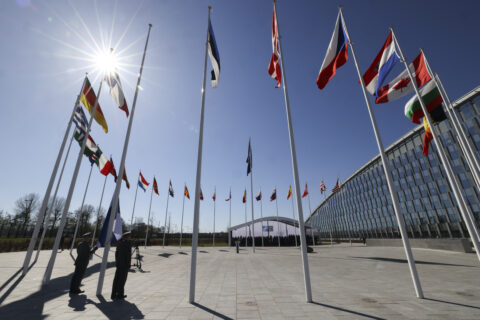
“Finland flag raising at NATO Headquarters 4 April 2023” by UK Government Picture by Rory Arnold / No 10 Downing Street is licensed under CC BY 2.0 .
For decades, U.S. policy toward Europe stayed the same: Washington anchored itself to the continent via NATO and acted as the region’s main security provider while the European members of NATO accepted U.S. leadership. Today, however, much of the Republican Party has departed from this consensus, opting instead for a policy summed up by Donald Trump’s comments on “delinquent” NATO countries: “If they’re not going to pay, we’re not going to protect.” In other words, the United States may remain committed to Europe, but only if European states pay up. Democrats, for their part, have dug in deeper in response to this shift. President Joe Biden has affirmed the “sacred” Democratic commitment to European defense and trumpeted the admission of Finland and Sweden to NATO as a great achievement of his administration. Kamala Harris has signaled no departure from Biden’s position as the presumptive Democratic presidential nominee.
A debate about the U.S. role in Europe is long overdue, but both sides have wrongly defined the issues and interests at play. In fact, the United States has the same cardinal interest in Europe today that it has had since at least the early 1900s: keeping the continent’s economic and military power divided. In practice, pursuing this goal has meant preventing the emergence of a European hegemon. Unlike the continent in the mid-twentieth century, however, Europe today lacks a candidate for hegemony and, thanks in part to the success of U.S. efforts after 1945 to rebuild and restore prosperity to Western Europe, another hegemonic threat is unlikely to emerge.
The United States should recognize that it has achieved its main goal in Europe. Having successfully ensured that no country can dominate the continent, it should embrace a new approach to the region. Under a revised strategy, the United States would reduce its military presence on the continent, Europeanize NATO, and hand principal responsibility for European security back to its rightful owners: the Europeans.
A Fine Balance
For more than 100 years, the United States has had one enduring national interest in Europe: keeping the continent’s economic and military power split among multiple states by preventing the emergence of a European hegemon that sought to consolidate that power for itself.
In World War I and World War II, Washington went to war to stop Germany from dominating Europe. NATO, founded in 1949, was designed to foreclose the possibility that a single country could take over the continent. As Secretary of State Dean Acheson remarked that year, the two world wars “taught us that the control of Europe by a single aggressive, unfriendly power would constitute an intolerable threat to the national security of the United States.”
U.S. support for NATO was a reasonable move at a time when the Soviet Union was threatening to overrun the continent, wartime memories were fresh, and Germany’s future was unclear. Yet even back then, Washington’s goal was not to take permanent responsibility for European security. Instead, NATO was intended as a temporary expedient to protect Western European states as they recovered from World War II, facilitate Western European efforts to balance Soviet power, and integrate West Germany into a counter-Soviet coalition that would also help civilize German power. In 1951, as the supreme Allied commander in Europe, Dwight Eisenhower noted, “If in ten years, all American troops stationed in Europe for national defense purposes have not been returned to the United States, then this whole project will have failed.”
To that end, Presidents Harry Truman and Eisenhower tried to pull together a “Third Force” of European power by encouraging France, the United Kingdom, West Germany, and other Western European states to combine their political, economic, and military resources against the Soviet Union. Once formed, this Third Force would relieve the United States of the duty to serve as Europe’s first line of defense. Only as it became clear in the late 1950s and early 1960s that Western European states worried as much about Germany as they worried about the Soviet Union did the United States reluctantly accept a more enduring role in the alliance.


